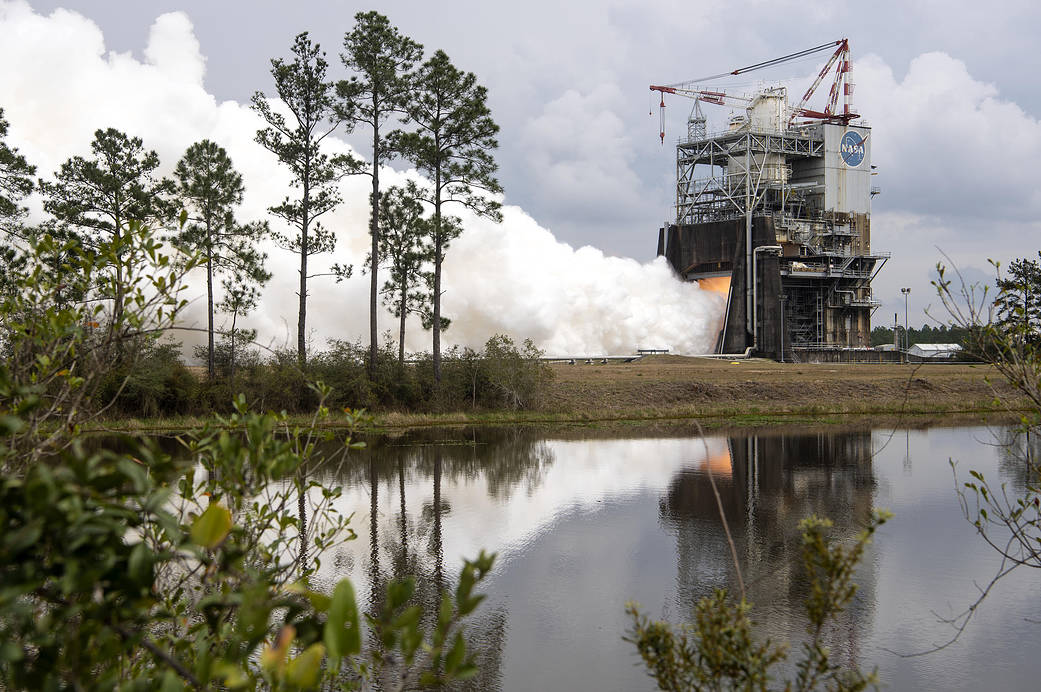
NASA marked yet another milestone in preparations for the first mission of its new Space Launch System (SLS) rocket Feb. 28, conducting an RS-25 engine test at its highest power level for an extended period of time. The 500-second RS-25 test was conducted on the A-1 Test Stand at NASA’s Stennis Space Center near Bay St. Louis, Mississippi. For the fourth time, NASA powered the engine to 113 percent of its original thrust design, this time for more than 430 seconds, about four times longer than any previous hot fire at that thrust level. The hot fire concluded a series of nine tests that began last August, using RS-25 developmental engine No. 0525. As with previous tests in the series, the Feb. 28 hot fire featured an RS-25 flight engine controller that will be used on an SLS mission. The controller is a key component of engine modifications made to help power SLS, being built as the world’s most-powerful rocket to carry humans deeper into space than ever, to such destinations as the Moon and, ultimately, Mars. The controller acts as the “brain” to help control engine operation and to facilitate communication between the engine and SLS rocket. NASA is modifying the RS-25 engines (former space shuttle main engines) to operate at 111 percent of original thrust design to help launch SLS on its missions. Four RS-25 engines, firing simultaneously, will produce 2 million pounds of combined thrust during SLS launch and ascent. Testing at 113 percent at Stennis – especially for the extended duration – demonstrates a margin of safety for operating the engine at the needed power level. In addition to the flight controller, the Feb. 28 test also featured a pair of innovative engine components – a 3D-printed pogo accumulator to dampen pressure oscillations that can cause flight instability and a main combustion chamber fabricated using a hot isostatic pressure (HIP) bonding technique. These components are early milestones in NASA’s and Aerojet Rocketdyne’s endeavor to maximize state-of-the-art manufacturing methods to significantly reduce the cost and time needed to build new RS-25 engines. With the end-of-February hot fire, the developmental engine will be removed from the test stand to prepare for installation of RS-25 flight engine No. 2062, scheduled for acceptance testing in early April. Each RS-25 test marks progress towards Exploration Mission-1, during which SLS will launch an uncrewed Orion spacecraft around the Moon and back to test critical capabilities needed for deep space flights. Exploration Mission-2 will carry astronauts aboard Orion on a return to deep space. In addition to testing RS-25 engines, NASA plans to test the fully assembled SLS core stage for the first mission on the B-2 Test Stand at Stennis, firing up all four engines at once. RS-25 tests at Stennis are conducted by a combined team of NASA, Aerojet Rocketdyne and Syncom Space Services operators. Aerojet Rocketdyne is the RS-25 prime contractor. Syncom Space Services is the prime contractor for Stennis facilities and operations.

























